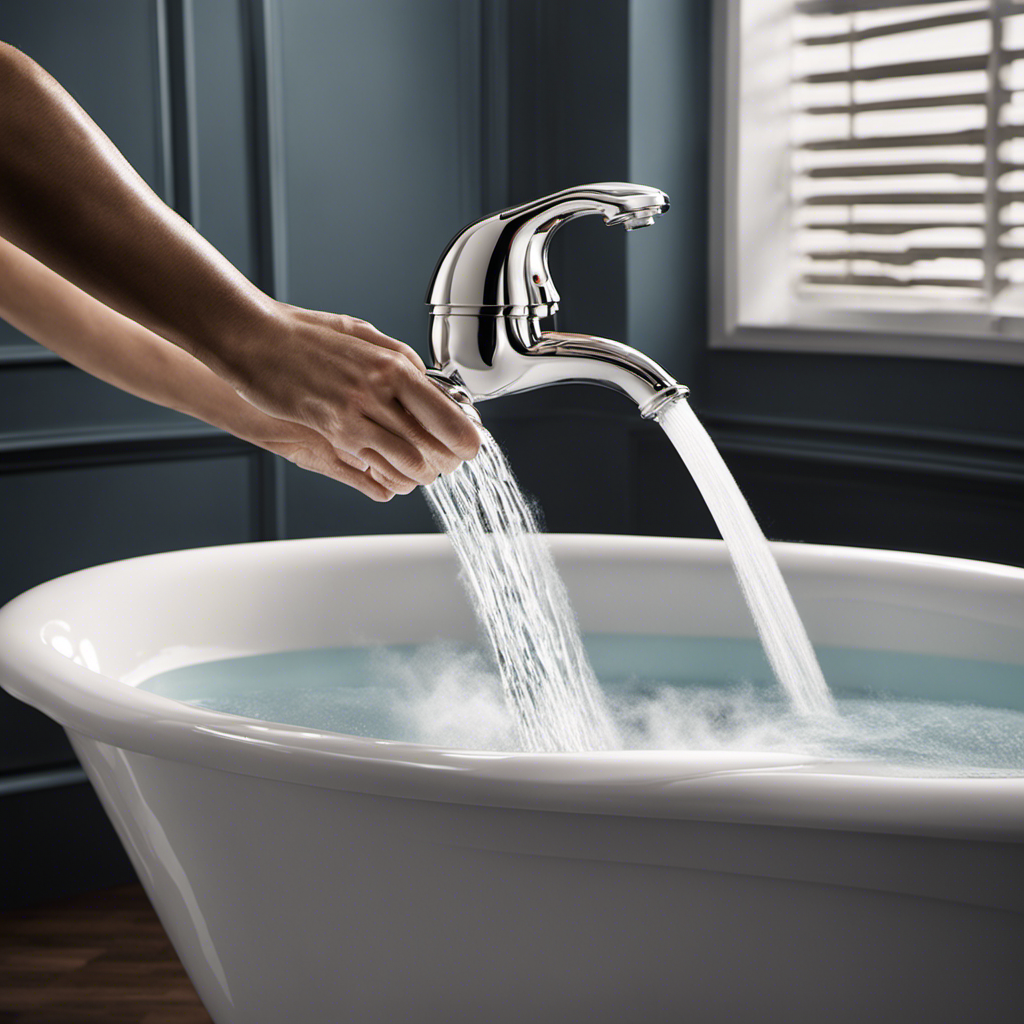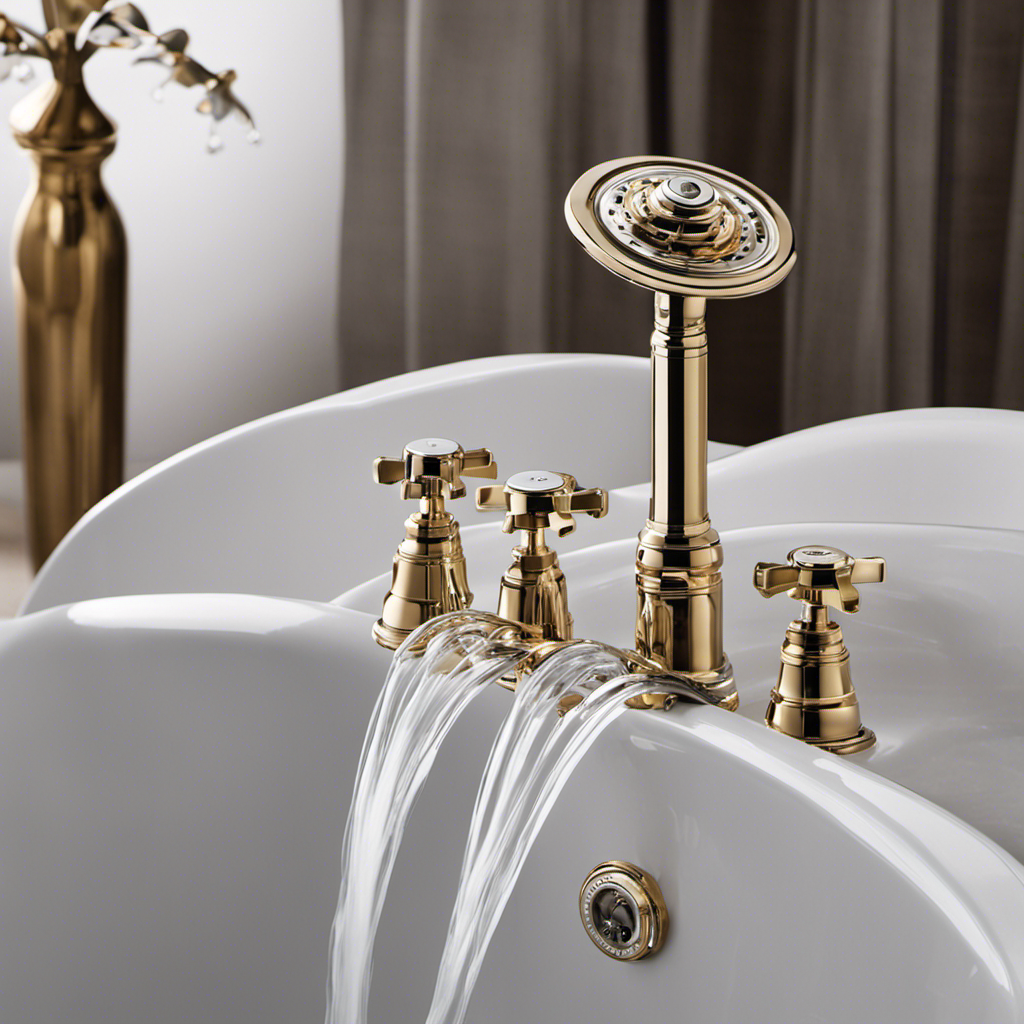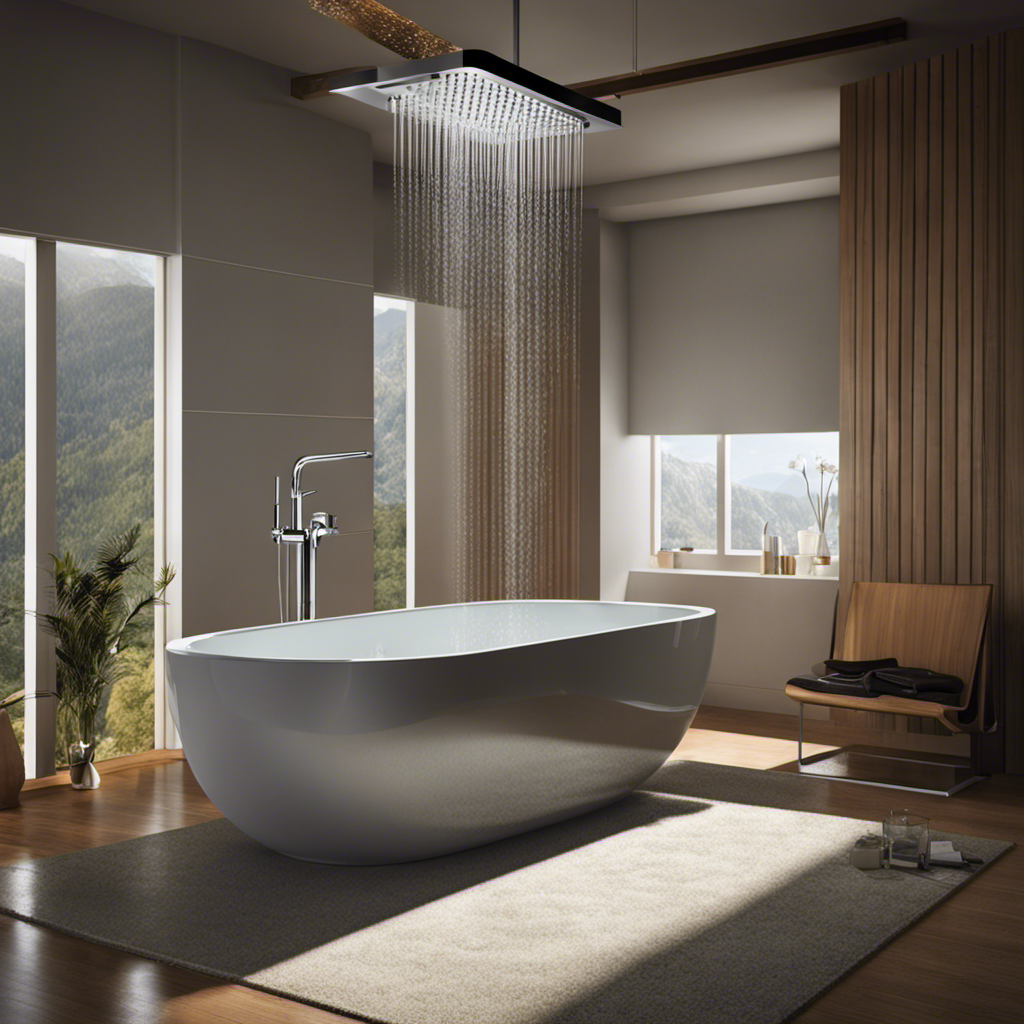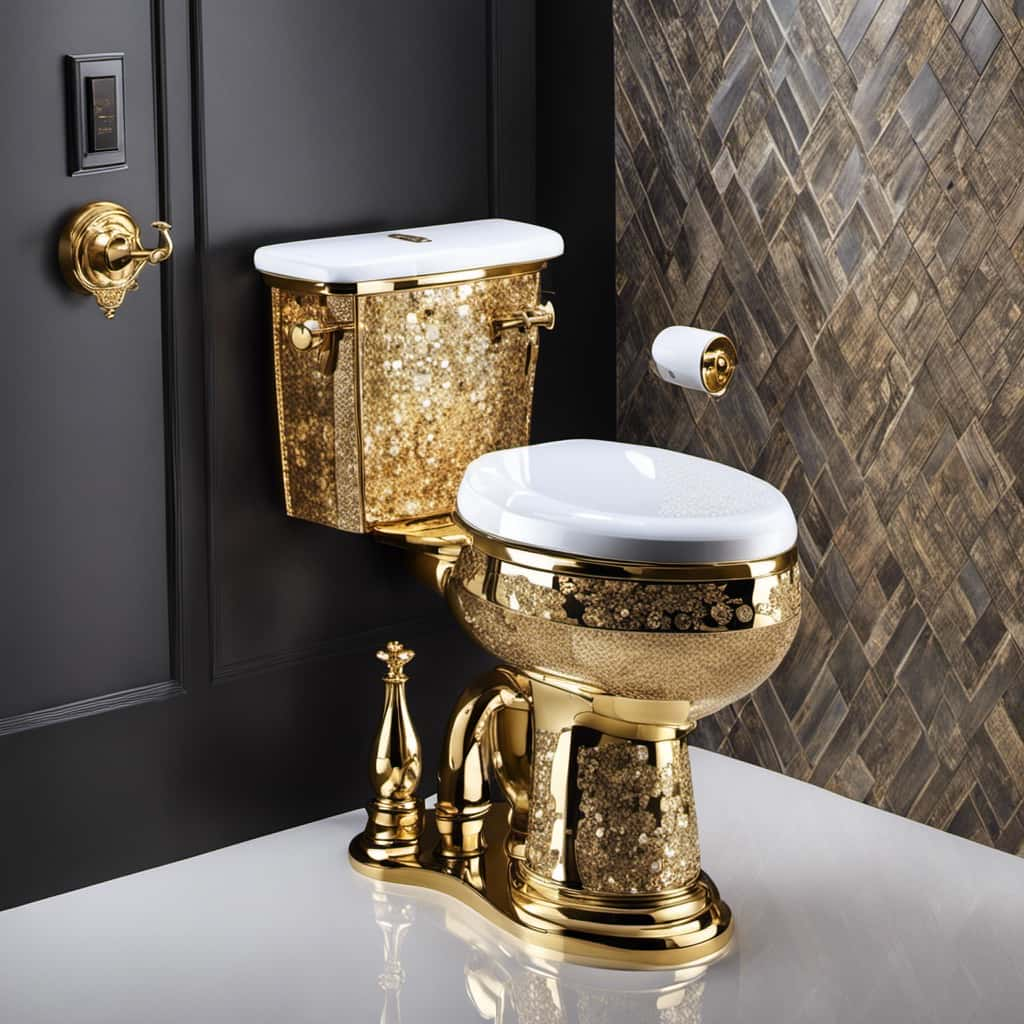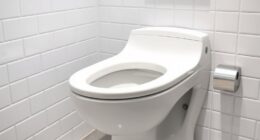When it comes to adjusting the hot water in my bathtub, I want to make sure I have complete control over the temperature.
In this article, I will guide you through the steps to achieve just that.
We will start by understanding the temperature control valve and checking the water heater settings.
Then, we will move on to adjusting the hot water mixing valve and troubleshooting any low hot water pressure issues.
Finally, I will share tips on maintaining a consistent hot water temperature.
Let’s get started!
Key Takeaways
- The temperature control valve behind the bathtub handle regulates the flow of hot and cold water and can be adjusted to control the water temperature.
- Familiarize yourself with the safety features of the temperature control valve to prevent water from reaching dangerous temperatures.
- Locate the temperature control panel on the water heater and adjust the temperature settings with a screwdriver or wrench according to the manufacturer’s instructions.
- To maintain consistent hot water temperature, regularly check the thermostat on the water heater, inspect for any damage, and use a water temperature gauge for accurate measurement. Adjust the thermostat if needed.
Understanding the Temperature Control Valve
To adjust the hot water in your bathtub, you’ll need to understand how the temperature control valve works.
The temperature control valve is a crucial component of your bathtub’s plumbing system that regulates the flow of hot and cold water to achieve your desired water temperature. This mechanism is typically located behind the bathtub handle or in the wall.
When you turn the handle to adjust the water temperature, the temperature control valve opens or closes to allow more or less hot water to mix with the cold water.
It is important to note that many temperature control valves also have hot water safety features, such as a limit stop or scald guard, to prevent water from reaching dangerously high temperatures.
Familiarizing yourself with these safety features will help you maintain a safe and comfortable bathing experience.
Checking the Water Heater Settings
Make sure you check if your water heater settings are properly adjusted. This is an important step in ensuring that you have the right temperature of hot water for your bathtub.
To adjust the water heater settings, follow these steps:
- Locate the temperature control panel on your water heater.
- Use a screwdriver or a wrench to adjust the temperature settings.
- Check the manufacturer’s instructions to determine the ideal temperature for your specific water heater model.
By adjusting the water heater settings, you can control the temperature of the hot water flowing into your bathtub. This is crucial for a comfortable bathing experience and to prevent scalding or freezing incidents.
Additionally, while checking the water heater settings, it is also important to inspect for any leaks or drips. Leaks can lead to wasted water and increased utility bills.
Once you have ensured that the water heater settings are adjusted correctly and there are no leaks, you can proceed to adjust the hot water mixing valve to further fine-tune the temperature of the water in your bathtub.
Adjusting the Hot Water Mixing Valve
Ensure that you have the right temperature of water in your tub by adjusting the mixing valve.
To fix leaks in the bathtub faucet and replace the bathtub spout, you need to first turn off the water supply to the tub. This can usually be done by locating the shut-off valve near the tub or by shutting off the main water supply to the house.
Once the water supply is turned off, you can begin removing the old spout by unscrewing it counterclockwise. If there are any leaks in the faucet, you may need to replace the washers or seals.
After fixing any leaks, you can then install the new spout by screwing it on clockwise. Finally, turn the water supply back on and test the temperature of the water in your tub to ensure it is adjusted correctly.
Troubleshooting Low Hot Water Pressure
If you’re experiencing low pressure in your hot water, it may be due to a clogged pipe or a faulty pressure regulator. Identifying the common causes of low hot water pressure is essential to address the issue effectively.
Firstly, check for any obstructions in the pipes, such as mineral deposits or debris. These can restrict the flow of water and lead to low pressure.
Additionally, a faulty pressure regulator can also cause low hot water pressure. To increase the hot water pressure, follow these steps.
Start by turning off the water supply to the house. Then, clean out any clogged pipes by flushing them with a solution of vinegar and water. If the pressure regulator is faulty, it may need to be replaced. Consult a professional plumber to ensure that the replacement is done correctly.
Maintaining Consistent Hot Water Temperature
To maintain a consistent hot water temperature, it’s important to regularly check the thermostat on your water heater. This ensures that the temperature is set at a safe and comfortable level, preventing scalding accidents. Here are three steps to help you maintain the ideal hot water temperature:
-
Inspect the thermostat: Locate the thermostat on your water heater and check if it’s functioning properly. Look for any signs of damage or wear and tear.
-
Use a water temperature gauge: Invest in a water temperature gauge to accurately measure the temperature of your hot water. This will help you determine if the thermostat needs adjustment.
-
Adjust the thermostat: If the temperature is too high or too low, use a screwdriver to adjust the temperature setting on the thermostat. Make small adjustments and test the hot water temperature until it’s comfortable and safe.
Regularly monitoring and adjusting the thermostat will ensure your hot water is consistently at the desired temperature, minimizing the risk of scalding accidents.
Conclusion
In conclusion, adjusting the hot water in your bathtub is like finding the perfect balance between fire and ice. By understanding the temperature control valve and checking the water heater settings, you can ensure a soothing experience every time you step into your tub.
Don’t forget to adjust the hot water mixing valve to your desired temperature and troubleshoot any issues with low hot water pressure. With these tips, you’ll be able to maintain a consistent hot water temperature, turning your bathtub into a sanctuary of relaxation.
So go ahead, dive in and let the warm waves wash away your worries.
